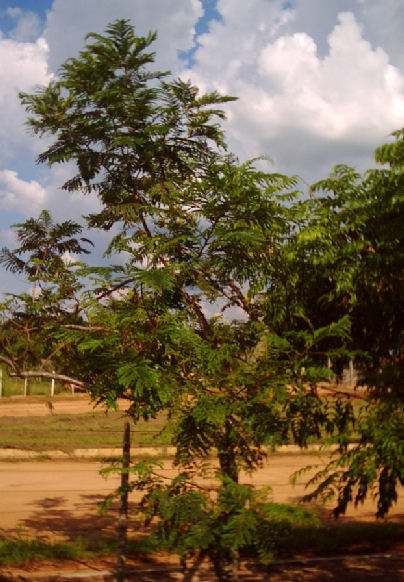

Jaracanda mimosifolia (Jaracanda)
The Jaracanda tree (Jacaranda mimosifolia) is one species from the family Bignoniaceae.
The Jaracanda is a tree, originally from South America. Its area of origin lies in the highlands of Brazil, Argentina and Paraguay. In subtropical and tropical regions it is grown worldwide because of its striking blue flowers as an ornamental. The tree is cold tender, but can withstand short periods with temperatures of 19°F, so it still thrives in the Mediterranean area, especially in Spain. It is not hardy in Germany, but it could be tried in very well sheltered places on the German North Sea Island. In South Africa, as well as in Australia, the neophyte is considered because of its tendency to widespread in wild, even as an invasive plant that endanger the biodiversity.
The Jacaranda is a deciduous tree, wich grows 17 to 67 feet. Its bark is thin and gray-brown color. The crown is roundish. The doubly pinnate leaves have a length of 6 to 16 inches and a width of 4 to 8 inches (rarely ten to) 15 to 20 pinnae of the first order. The first-order pinnae consist of 15 to 25 sessile leaflets, which have al ength of 3 to 12 mm and a width of 1 to 4 mm.
The flowering periods lasts up to two months. The flowers are arranged in an inflorescence. The hermaphrodite, fivefold flowers are up to 2 inches long and 1.6 inches wide. The five sepals are narrowly campanulate grown together. The pistil ends in a bilobed stigma.
The flat, leathery, reddish-brown fruit capsules have a diameter of 2 inches and contain numerous seeds. The seeds are surrounded by a membranous wing.
We have one specimen in our garden.

Jaracanda mimosifolia in our garden in February 2009.
Back to the Ornamental Plant List
Created by Joachim Jaeck on December 1st, 2009